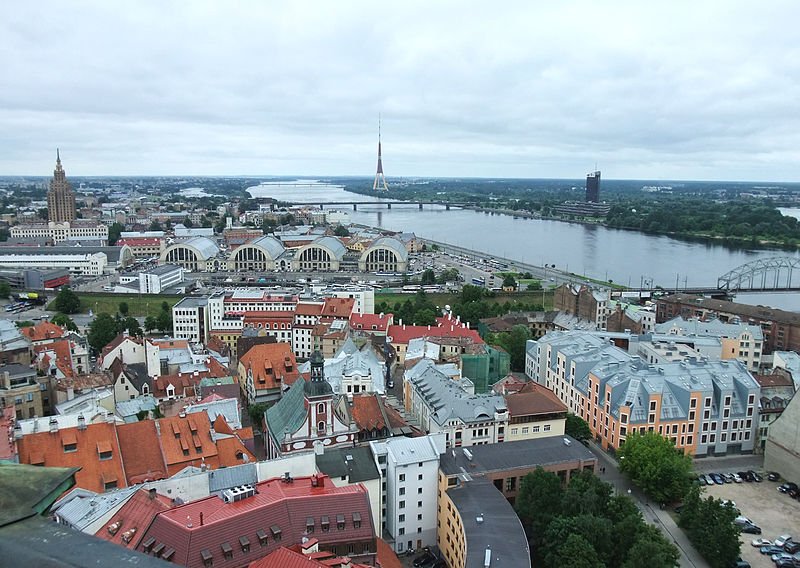 Panoramic view of Riga
Panoramic view of RigaSource: https://commons.wikimedia.org/wiki/File:Riga-Blick_von_Petrikirche01.jpg
Author: Nikater

Riga is the capital and biggest city in Latvia. With a population of 706,000 (2011 estimate), Riga is the biggest city of the three Baltic states (which includes Estonia, Latvia and Lithuania). It is located in the Gulf of Riga facing the Baltic Sea.
Riga covers 307.17 sq km (118.6 sq mi). It consists of six administrative districts namely Central Riga, Kurzeme, Northern Riga, Latgale, Vidzeme and Zemgale. The River Daugava flows through the city on its way into the Gulf of Riga.
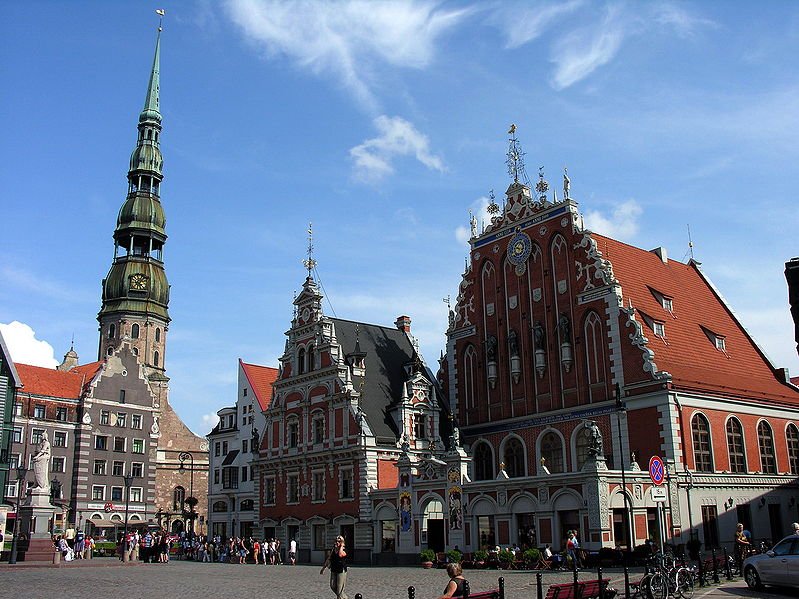 House of Blackheads, Riga, Latvia
House of Blackheads, Riga, LatviaSource: https://commons.wikimedia.org/wiki/File:Ryga1.2007-08-09.jpg
Author: Algėrds

Riga experiences a humid continental climate. July and August are the warmest month. That's when the average temperature of the day rise to 21°C (70°F) and some times more. On the other hand, January and February are bitterly cold, with average temperatures dropping to -7.8°C (18°F). July is the wettest month in Riga with 85 mm (3.35 in ) of precipitation. The days are also longest in July, which gets a total of 306.8 hours of sunshine, compared to just 23.5 hours in December.
Human habitation in the Riga area goes back thousands of years. Its location on the River Daugava puts in on an important trade route since antiquity. This was the route used by the Vikings to reach Byzantium. The area has been settled by various tribes over the centuries, among them the Livs, which gave Latvia its name, at that time known as Livonia.
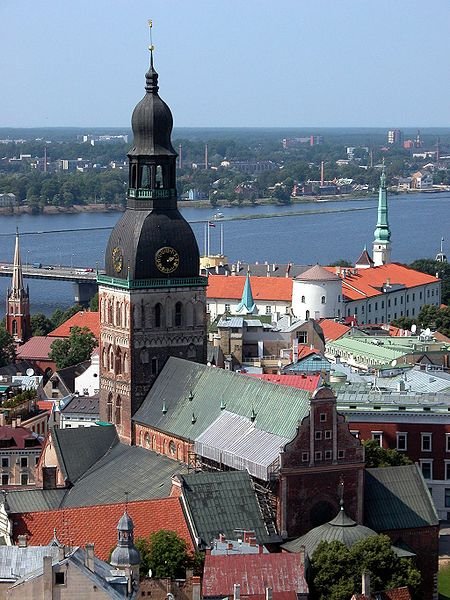 Dome Cathedral, Riga
Dome Cathedral, RigaSource: https://commons.wikimedia.org/wiki/File:Riga_Dom-D%C3%BCna.jpg
Author: Brunswyk

By the Middle Ages Riga had grown into a trading settlement involved in the fishing industry, animal husbandry, wood craft and general trading. Peoples from various lands come here to trade. Christianity was introduced by a German monk, Meinhard of Segeberg, who came and lived with the Liv people.
Riga joined the Hanseatic League in 1282. This provided it the stability to pursue further grown and prosperity. By the 16th century, however, the Hanseatic League was in decline. At the same time, Protestant Reformation was growing in strength, and Riga converted from the Catholic faith to Protestant in 1522.
An unusual spectacle took place in 1524, when the statue of the Virgin Mary in the Catholic Cathedral was denounced as a witch. It was thrown into the river, where it floated, comfirming the local belief that it was indeed a witch. The statue was then fished out of the water and burnt.
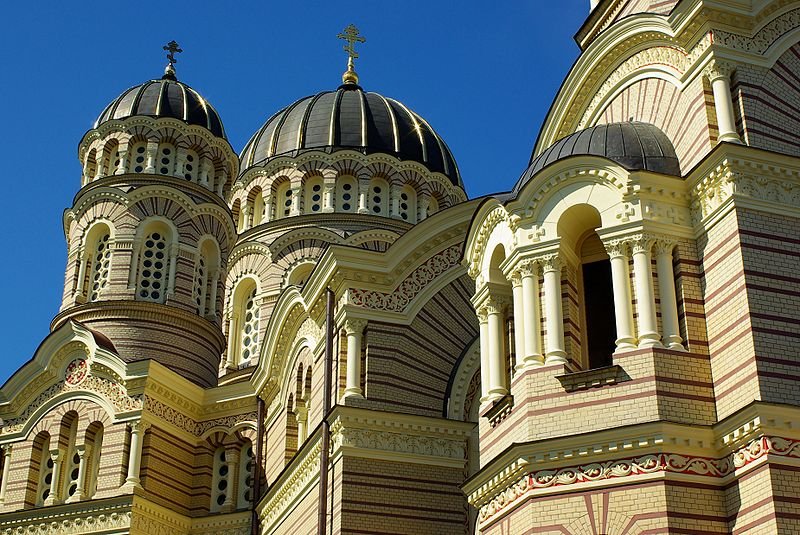 Nativity of Christ Orthodox Cathedral, Riga
Nativity of Christ Orthodox Cathedral, RigaSource: https://commons.wikimedia.org/wiki/File:Lateral_view_of_the_Riga_Nativity_of_Christ_Orthodox_Cathedral.JPG
Author: Tiago Fioreze

From the late 16th century into the early 17th, Riga was under the Holy Roman Empire, and then the Polish-Lithuanian Commonwealth. Then it became part of Sweden following the Polish-Swedish War of 1621-25. It was the biggest city in Sweden until 1710, when it was captured by Russia in the Great Northern War, and made the capital of the Governorate of Riga, later, of Livonia, within the Russian Empire.
Riga remained under Russia until 1917, when the German army invaded the Baltic states and made them part of Germany. However, due to an armistice between the Allies, Germany could not claim the Baltic states, and had to let them declare their respective independence.
Riga enjoyed its freedom until the Second World War, when it was invaded first by the Soviet Union in 1940, and then by Nazi Germany from 1941 to 1944. After the war, it was once again occupied by the Red Army, and annexed as part of the Soviet Union, as the Latvia SSR.
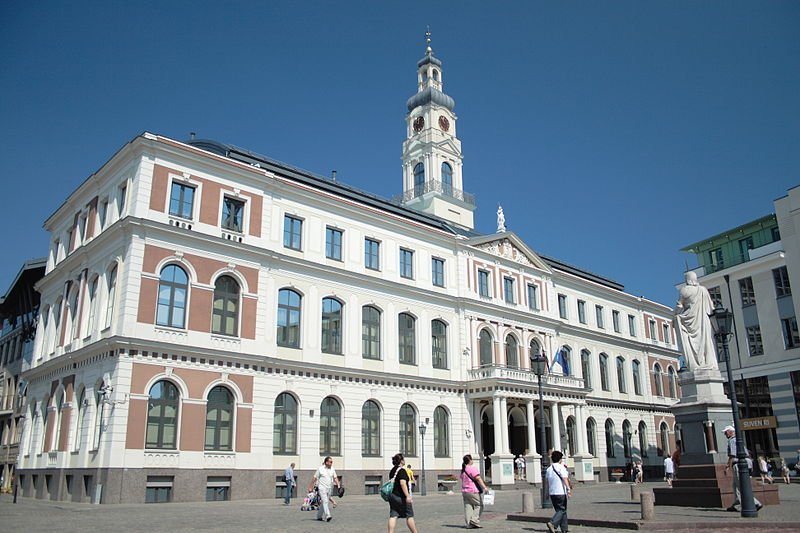 Riga Town Hall
Riga Town HallSource: https://commons.wikimedia.org/wiki/File:Riga_City_Hall.JPG
Author: Philaweb

The collapse of the Soviet Union in 1989 allowed Latvia to be free once more, and in 1991, Riga became the capital of the independent Latvia. It promptly joined the United Nations, and in 2004 NATO and the European Union.
Riga today is a modern city that has managed to preserved its past. While being the industrial, commercial, cultural and financial hub of the Baltics, it is also noted for having one of the best preserved collection of Jugendstil (German Art Nouveau) architecture in the world. The historic center of Riga is recognized by UNESCO as a World Heritage Site since 1997.
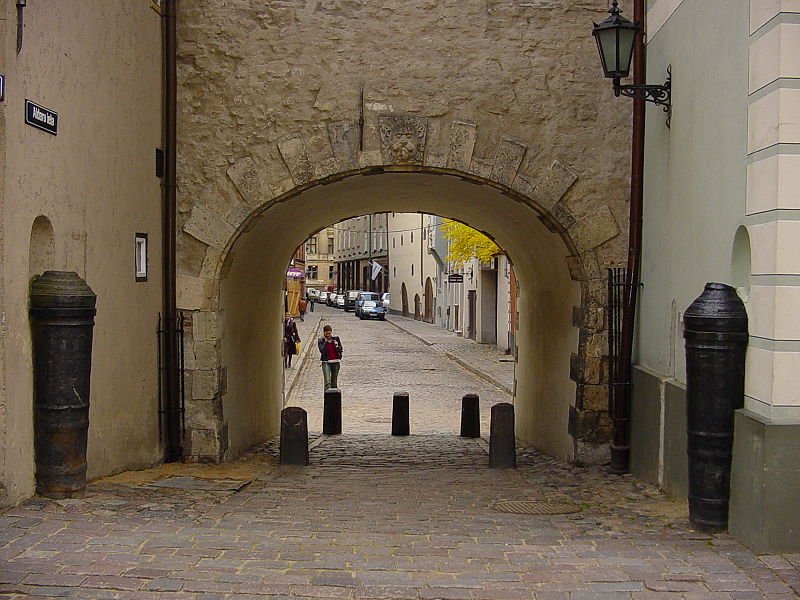 Swedish Gate, Riga
Swedish Gate, RigaSource: https://commons.wikimedia.org/wiki/File:Svenskporten_Riga.jpg
Author: Tahbepet

Visiting Riga, Latvia
The Riga International Airport (RIX) is the biggest airport in the Baltic states. It is about 10 km (6.2 mi) to the west of Riga. The airport has three terminals of which Terminals A and C are for flights to non-Schengen destinations while Terminal B exclusively for flights within the Schengen Area. There are regular flights connecting it to most major cities in Europe as well as with Dubai, Istanbul and New York City.Arriving at Riga Airport, you can take Bus 22 to downtown Riga. It goes all the way to the Old Town. It accepts the 24-hour transport pass. The journey takes about 40 minutes. Taxis to downtown Riga will cost you Ls 9 for the 15-minute ride. The Airbaltic Airport Express uses minibuses to ferry passengers to downtown Riga. They stop at major hotels, so are more convenient if they happen to stop at your hotel. The journey takes about 20 minutes, depending on your location.
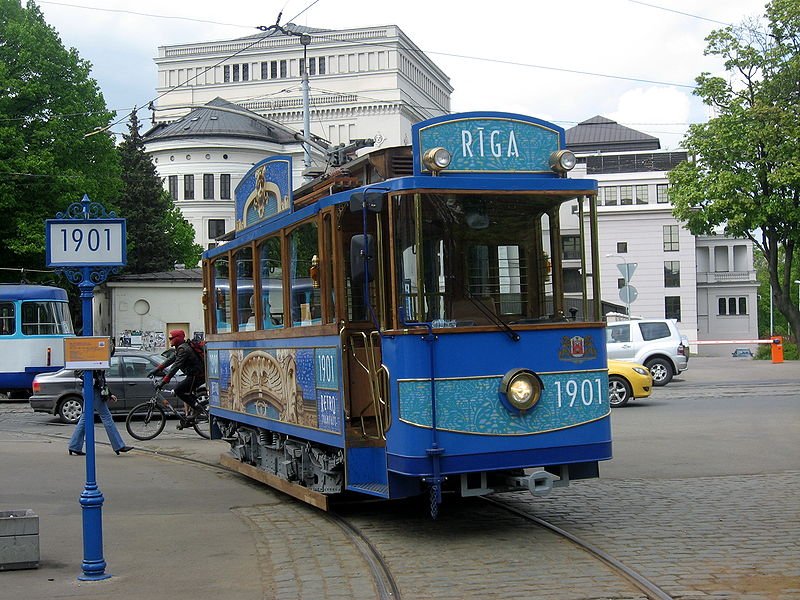 A tram in Riga
A tram in RigaSource: https://commons.wikimedia.org/wiki/File:Retro_tramvaj_v_Rize.jpg
Author: Dezidor

Exploring Riga
As cars (except delivery vehicles) are not allowed inside the Old Town, the area is made for pedestrians. For greater distances, there are trams, buses and trolley buses. There are transport pass called the Riga Card which allows you unlimited rides on the public transport. They are available for 24 hours for Ls 10, 48 hours for Ls 14 and 72 hours for Ls 18.Places of Interest in Riga, Latvia
Churches and Cathedrals- Dome Cathedral
- Orthodox Cathedral
- St Jacob's Cathedral
- St John's Church
- St Peter's Church
- St Saviour's Church
- Arsenal Museum of Art
- Janis Rozentals and Rusolfs Blaumanis Memorial Museum
- Krišjānis Barons Memorial Museum
- Latvian National Museum of Art
- Museum of Decorative Arts and Design
- Museum of Jews in Latvia
- Museum of the Barricades of 1991
- Museum of the Occupation of Latvia
- Museum of Riga's History and Navigation
- Pauls Stradiņš Museum of the History of Medicine
- Photography Museum
- Porcelain Museum
- Powder Tower/Latvian War Museum
- Riga Castle
- Bastejkalns
- Cats' House
- Freedom Monument
- Great Guild
- House of Blackheads
- Latvian Riflemen Monument
- Mentzendorff House
- Parliament of Latvia
- Small Guild
- St Jacob's Barracks
- Swedish Gate
- Three Brothers
 Latest updates on Penang Travel Tips
Latest updates on Penang Travel Tips

Copyright © 2003-2025 Timothy Tye. All Rights Reserved.

 Go Back
Go Back